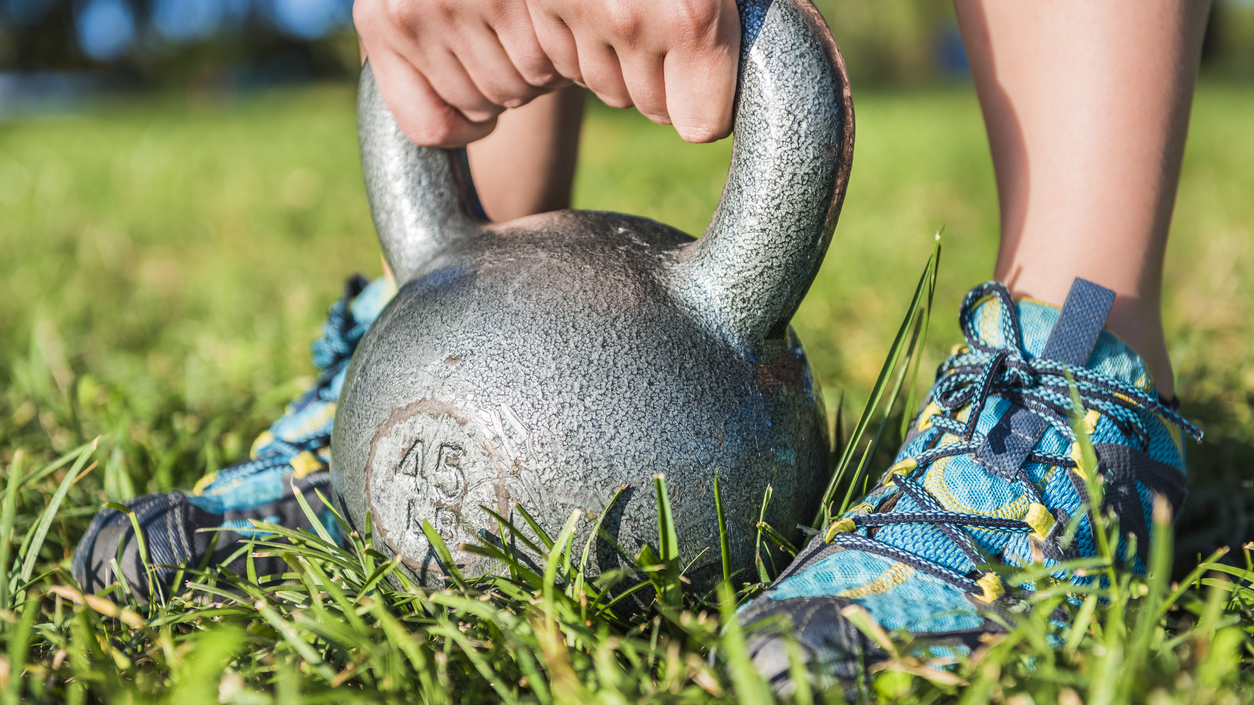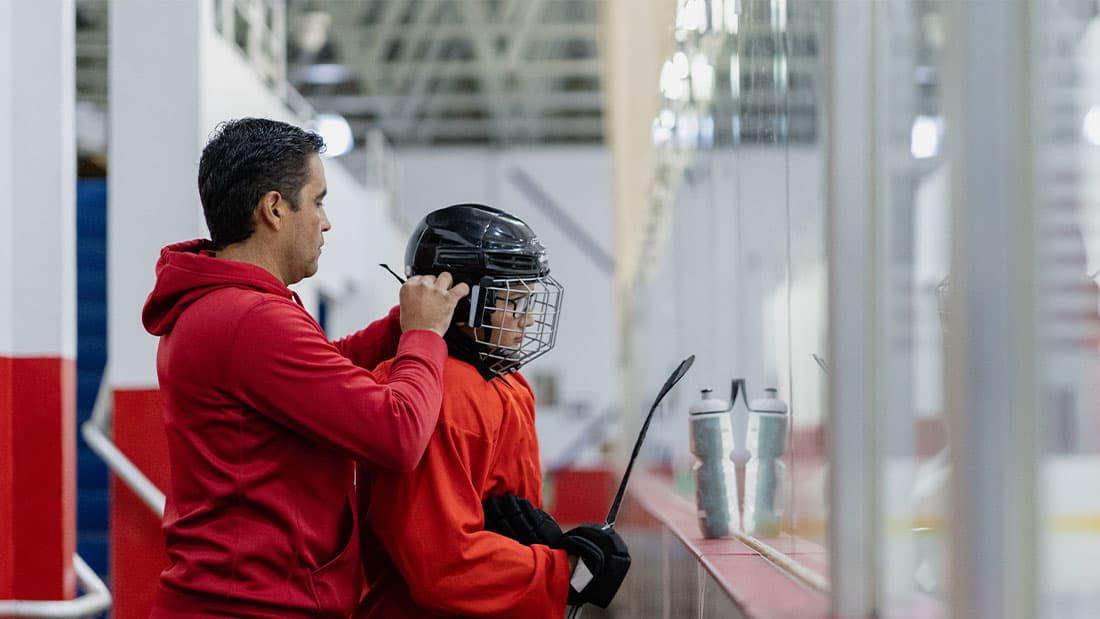Get Fit With These Off-Season Lacrosse Conditioning Drills

Every off-season brings athletes a choice. They can work out and practice their skills, play in an off-season league, or lie around playing video games. Recommit to your sport by using this valuable free time to benefit your performance. The worst thing athletes can do, especially those in contact sports, is to skip off-season training.
For lacrosse athletes, it’s especially difficult to squeeze in off-season lacrosse conditioning drills between leagues and other sporting activities. My advice, not always welcome, is “stop playing so much.”
Let’s do things your way first. You’re playing several different sports, conditioning for lacrosse and practicing skill work about ten percent of the time. I guarantee you’ll come back next season at the same fitness level as last year. Since you only trained ten percent of the time, you made no improvements in your skillset.
Now let’s say you’re training 80 percent of the time and working on skills 20 percent. You’ve recovered from the beating that last season put on you; you’re increasing your level of fitness; and you’re doing all this with a well-designed off-season training program. You will enter next season bigger, stronger and faster.
When creating an off-season training program for lacrosse, let’s look first at the energy system used predominantly in the sport. Lacrosse requires athletes to have a good aerobic base—meaning their bodies need oxygen for energy expenditures lasting more than 30 seconds. However, lacrosse players use their anaerobic energy systems even more—that is, their bodies use glycogen to produce energy for short, quick bursts of activity. Think of the quick sprints required to run down an opponent or beat a defender to the net.
When designing a lacrosse-specific off-season conditioning program, refer to the aerobic-anaerobic continuum below.
Aerobic-Anaerobic Continuum
Very Aerobic —————-Mixed—————-Very Anaerobic
Most lacrosse athletes would agree that they play in the mixed area of the continuum, leaning more towards the anaerobic end, around 70 percent anaerobic and 30 percent aerobic.
The following conditioning workout will allow you to increase your fitness level for the upcoming season and take your game to a new level.
Dynamic Warm-Up
This is an extremely important component of any training program. Each athlete needs to be attentive and to perform each exercise to the best of his or her ability. In addition to reducing the risk of injury, warm-ups are great for implementing corrective exercises, ones that address mobility issues and stability imbalances.
Along with a warm-up, try to start and end your workouts with foam rolling for myofascial release. This will improve the overall quality of your muscles and make your training more productive.
Day 1: Lacrosse Conditioning Drills
On your first day, pick only four of the lacrosse conditioning drills. At the end of the workout run a series of sprints. Perfect sprints are two 10×40-yard runs. Each week try to increase sprints by two.
T-Drill – Set up four cones in a T shape. Starting at the base of the T, sprint to top cone, cut around it and touch base of cone; sprint left, touch cone, and sprint right to far cone; sprint back to middle cone and cut back to start position.
Quick Foot Ladder Drills – Use different movement patterns during each set. Sprint out of ladder, touch each cone and sprint back to ladder for finish.
Four Corner Drill – Set up cones in two 10×10-yard boxes.
• Sprint, sprint, sprint and sprint
• Figure eight sprint
• Back pedal, sprint, back pedal, sprint
Pro Agility Drill – Start with feet straddling a line and one hand on the line. Sprint 5 yards to the right or left cone and touch it with outside hand. Turn and sprint 10 yards and touch line with opposite hand. Turn and sprint five yards to finish in middle.
L-Drill – Set up three cones in the shape of an L. Start on outside of cone with one with hand on ground. On command, sprint and touch cone two; immediately turn and sprint back to cone one and touch; sprint around outside of cone two and run inside of cone three; turn and sprint back to cone two, then finish through cone one.
Day 2: Lacrosse Conditioning Program
6×30-Yard Tag Relay Runs – Four sets. Two lines. Player sprints to the 60, tags partner (before he or she can take off) and sprints 40 yards to tag the next player.
LA – Four sets. Use various movements and different distances for each movement. Players must complete each movement prior to beginning the next. Each LA lasts no more than one minute.
6×60-Yard Shuttle – Player sprints five yards and back, 10 yards and back, and 15 yards and back. If player takes more than 15 seconds, he or she must perform another shuttle.
Check out STACK’s library of conditioning workouts for more exercises and drills to get you ready for next season.
Photo credit: johnnie-o.blogspot.com
RECOMMENDED FOR YOU
MOST POPULAR
Get Fit With These Off-Season Lacrosse Conditioning Drills
Every off-season brings athletes a choice. They can work out and practice their skills, play in an off-season league, or lie around playing video games. Recommit to your sport by using this valuable free time to benefit your performance. The worst thing athletes can do, especially those in contact sports, is to skip off-season training.
For lacrosse athletes, it’s especially difficult to squeeze in off-season lacrosse conditioning drills between leagues and other sporting activities. My advice, not always welcome, is “stop playing so much.”
Let’s do things your way first. You’re playing several different sports, conditioning for lacrosse and practicing skill work about ten percent of the time. I guarantee you’ll come back next season at the same fitness level as last year. Since you only trained ten percent of the time, you made no improvements in your skillset.
Now let’s say you’re training 80 percent of the time and working on skills 20 percent. You’ve recovered from the beating that last season put on you; you’re increasing your level of fitness; and you’re doing all this with a well-designed off-season training program. You will enter next season bigger, stronger and faster.
When creating an off-season training program for lacrosse, let’s look first at the energy system used predominantly in the sport. Lacrosse requires athletes to have a good aerobic base—meaning their bodies need oxygen for energy expenditures lasting more than 30 seconds. However, lacrosse players use their anaerobic energy systems even more—that is, their bodies use glycogen to produce energy for short, quick bursts of activity. Think of the quick sprints required to run down an opponent or beat a defender to the net.
When designing a lacrosse-specific off-season conditioning program, refer to the aerobic-anaerobic continuum below.
Aerobic-Anaerobic Continuum
Very Aerobic —————-Mixed—————-Very Anaerobic
Most lacrosse athletes would agree that they play in the mixed area of the continuum, leaning more towards the anaerobic end, around 70 percent anaerobic and 30 percent aerobic.
The following conditioning workout will allow you to increase your fitness level for the upcoming season and take your game to a new level.
Dynamic Warm-Up
This is an extremely important component of any training program. Each athlete needs to be attentive and to perform each exercise to the best of his or her ability. In addition to reducing the risk of injury, warm-ups are great for implementing corrective exercises, ones that address mobility issues and stability imbalances.
Along with a warm-up, try to start and end your workouts with foam rolling for myofascial release. This will improve the overall quality of your muscles and make your training more productive.
Day 1: Lacrosse Conditioning Drills
On your first day, pick only four of the lacrosse conditioning drills. At the end of the workout run a series of sprints. Perfect sprints are two 10×40-yard runs. Each week try to increase sprints by two.
T-Drill – Set up four cones in a T shape. Starting at the base of the T, sprint to top cone, cut around it and touch base of cone; sprint left, touch cone, and sprint right to far cone; sprint back to middle cone and cut back to start position.
Quick Foot Ladder Drills – Use different movement patterns during each set. Sprint out of ladder, touch each cone and sprint back to ladder for finish.
Four Corner Drill – Set up cones in two 10×10-yard boxes.
• Sprint, sprint, sprint and sprint
• Figure eight sprint
• Back pedal, sprint, back pedal, sprint
Pro Agility Drill – Start with feet straddling a line and one hand on the line. Sprint 5 yards to the right or left cone and touch it with outside hand. Turn and sprint 10 yards and touch line with opposite hand. Turn and sprint five yards to finish in middle.
L-Drill – Set up three cones in the shape of an L. Start on outside of cone with one with hand on ground. On command, sprint and touch cone two; immediately turn and sprint back to cone one and touch; sprint around outside of cone two and run inside of cone three; turn and sprint back to cone two, then finish through cone one.
Day 2: Lacrosse Conditioning Program
6×30-Yard Tag Relay Runs – Four sets. Two lines. Player sprints to the 60, tags partner (before he or she can take off) and sprints 40 yards to tag the next player.
LA – Four sets. Use various movements and different distances for each movement. Players must complete each movement prior to beginning the next. Each LA lasts no more than one minute.
6×60-Yard Shuttle – Player sprints five yards and back, 10 yards and back, and 15 yards and back. If player takes more than 15 seconds, he or she must perform another shuttle.
Check out STACK’s library of conditioning workouts for more exercises and drills to get you ready for next season.
Photo credit: johnnie-o.blogspot.com










